Issue #43, Volume #2


Stepping Back To Look At What The Markets Are Telling Us
This is Porter’s Daily Journal, a free e-letter from Porter & Co. that provides unfiltered insights on markets, the economy, and life to help readers become better investors. It includes weekday editions and two weekend editions… and is free to all subscribers.
| Investors are still incredibly aggressive… Avoiding losing is the way to win… Ignoring government spending could lead to a recession… If you’re prepared, that’s great news… The tariff rollercoaster continues… |
In today’s Journal I thought it might be useful to have “a review of the bidding.”
I’m a card player. I love to play spades and bridge. One of the most important factors to understanding the games, in addition to reading the other players and handicapping what’s most likely to unfold, is knowing “the bid.” The bid, even more so than your own cards, should determine how you play your hand.
Today, in the financial markets, the bid is clear:
1. Stocks, on average, have rarely been this expensive.
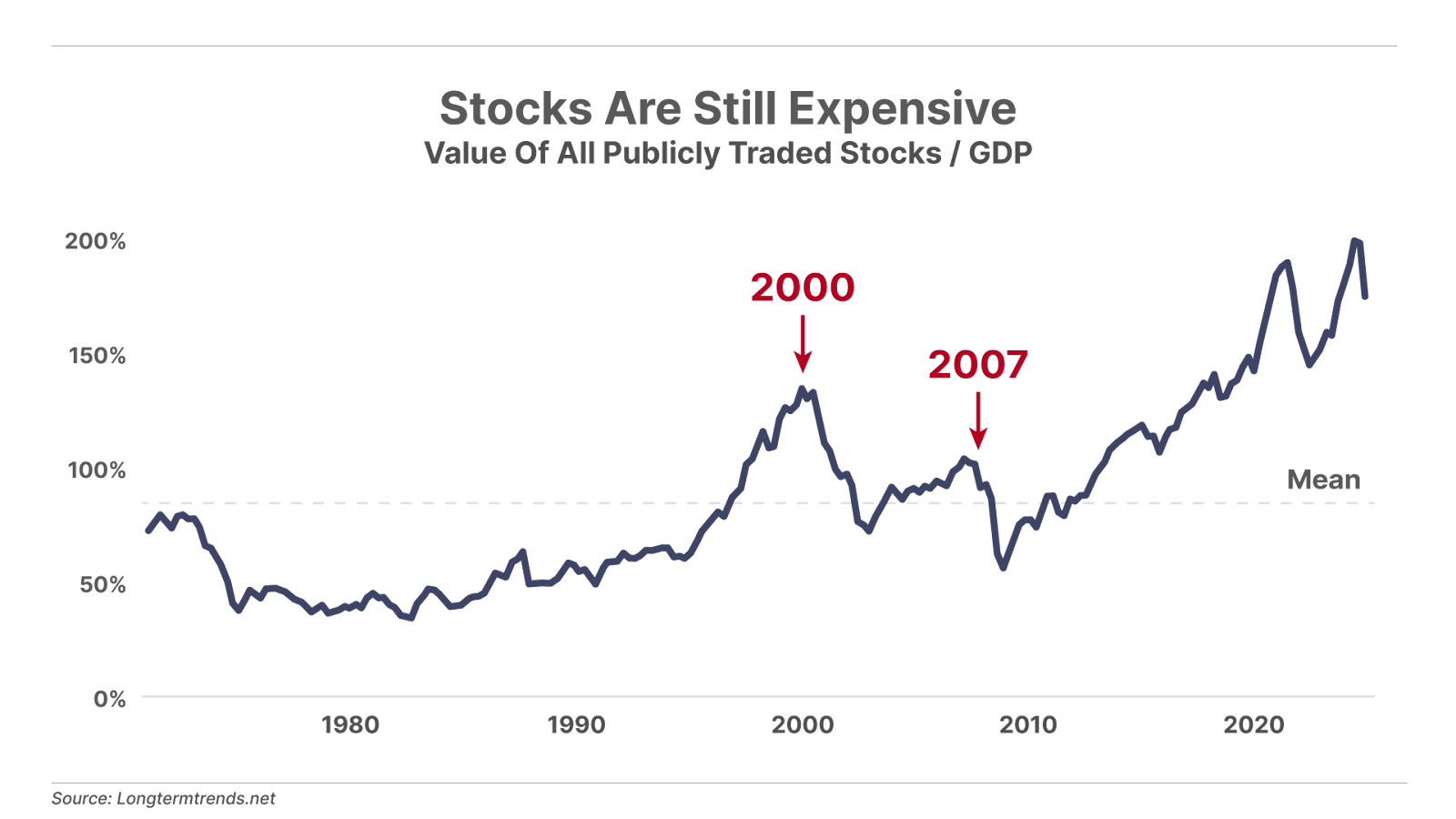
2. Corporate credit has rarely been this widely available, at such low rates.
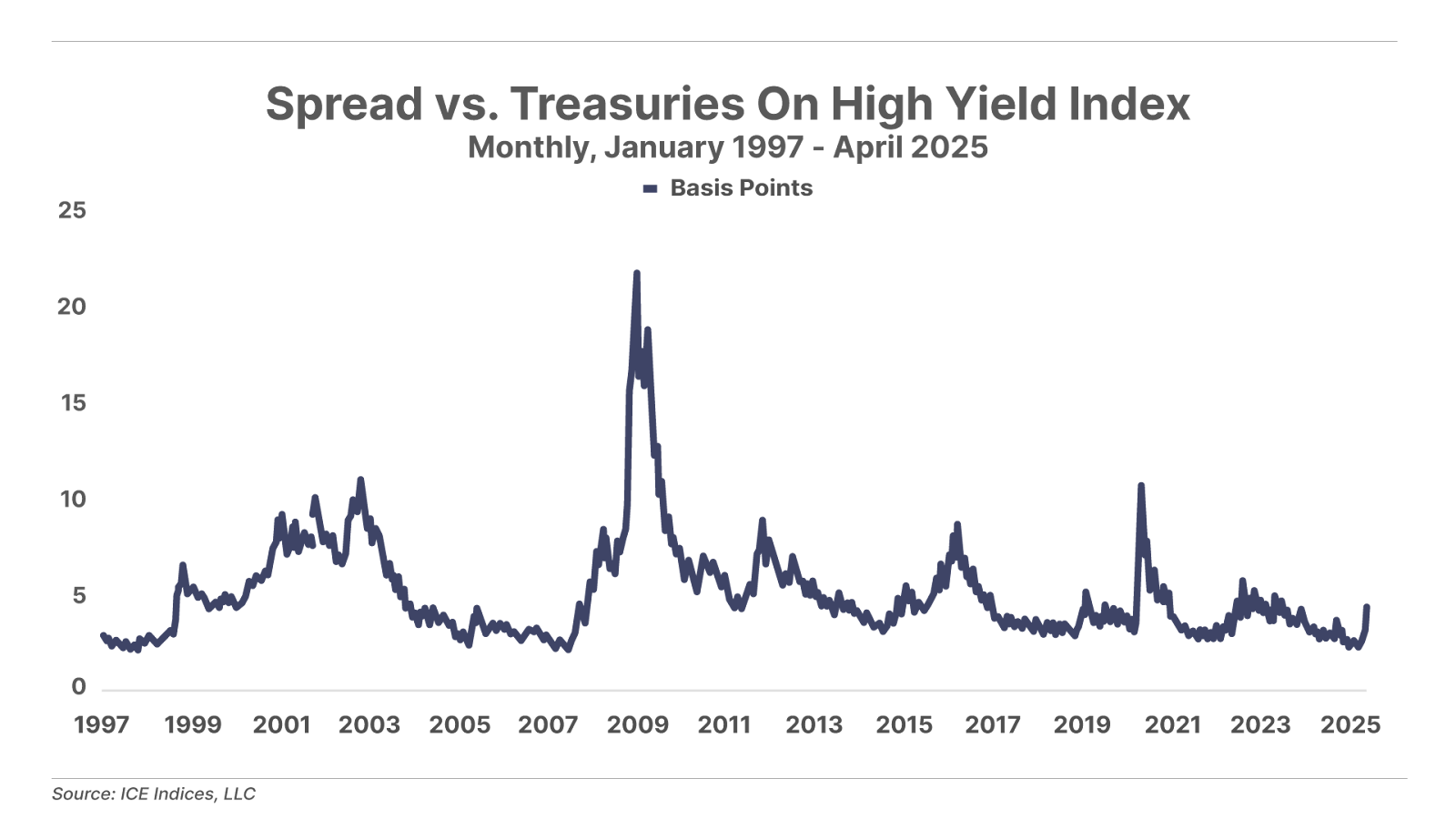
3. Investor optimism (around President Donald Trump, artificial intelligence, the parallel-processing revolution, SpaceX, etc.) has rarely been more euphoric, which has created enormous returns in tech stocks recently.
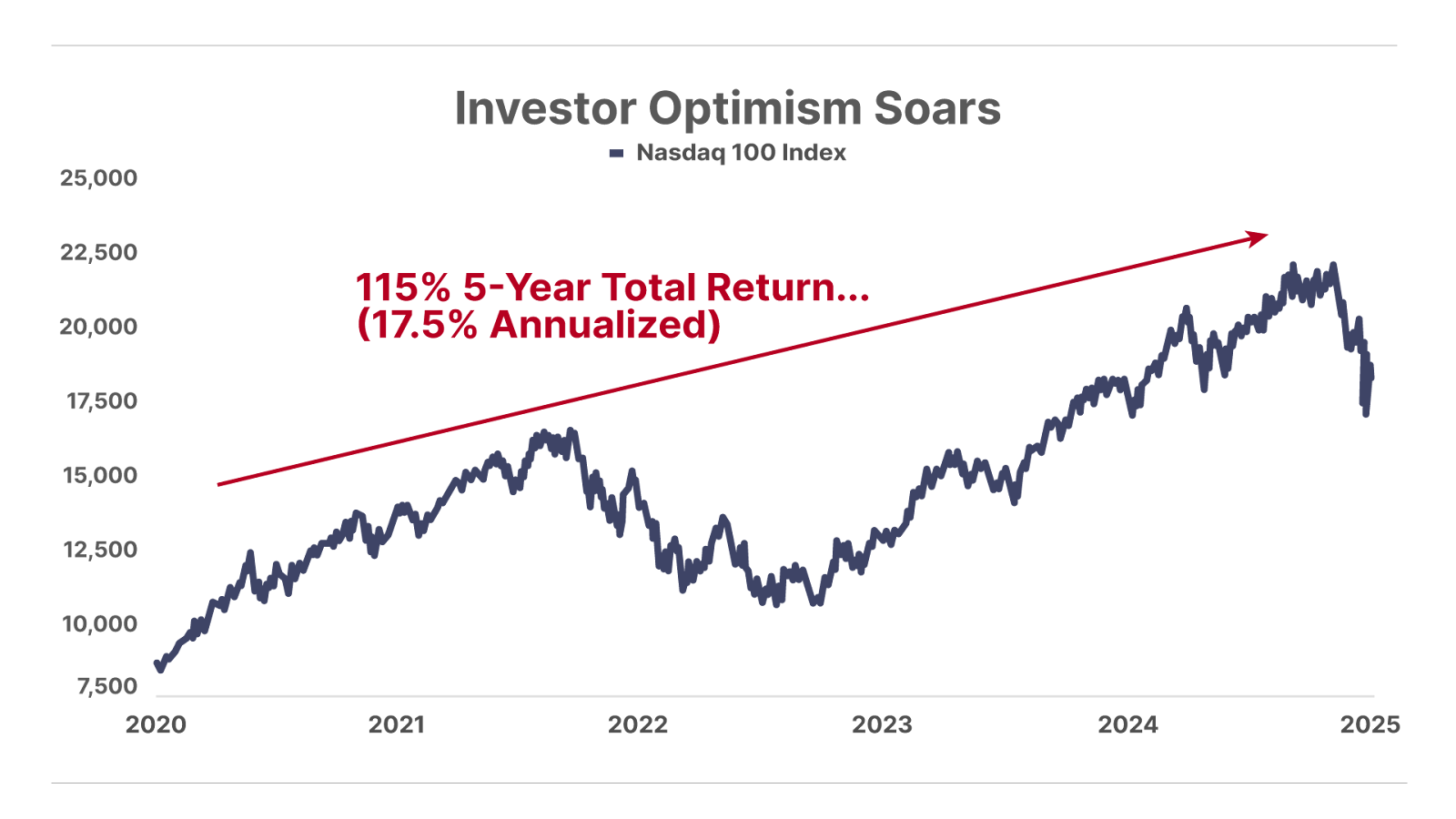
These factors, alone, would tell me my “opponents” in the markets have made an incredibly aggressive bid. Rather than trying to outbid them, my response is to play ultra-conservatively and try to “set them.”
In other words, to win this game, I simply need to avoid losing.
This advice, ironically, will lead a lot of our subscribers to cancel. Everyone wants the market to do something for them. But that’s not the way markets work. Arguing with the market is like arguing with the tide. If the tide is going out, you can’t make it come in. You have to wait for it to come in.
To us, it seems obvious that the tide is going out.
Given the virtually unprecedented scope of the previous bull market cycle, it could easily take a decade or more for our markets to reach a final bottom. Nobody else is going to tell you this, but it’s true. These cycles take a long, long time to sort out.
When the Tokyo market had its epic bull market in the late 1980s, stocks reached multiples of 70x earnings, on average. And that market didn’t reach a final bottom until 20 years later. The last big tech bubble in America (in 2000) didn’t reach a final bottom for nine years.
Our financial markets have become extremely, incredibly, inflated. That’s happened for a variety of reasons, but the single biggest driver has been unprecedented levels of fiscal stimulus via huge government deficit spending, financed, in large part, by our central bank. This has caused our national debt to grow by more than 300% since 2009.
According to the Congressional Budget Office, 25% of our entire national debt must be refinanced this year ($9.2 trillion), plus we’re on track to record another enormous fiscal deficit (over 5% of GDP).
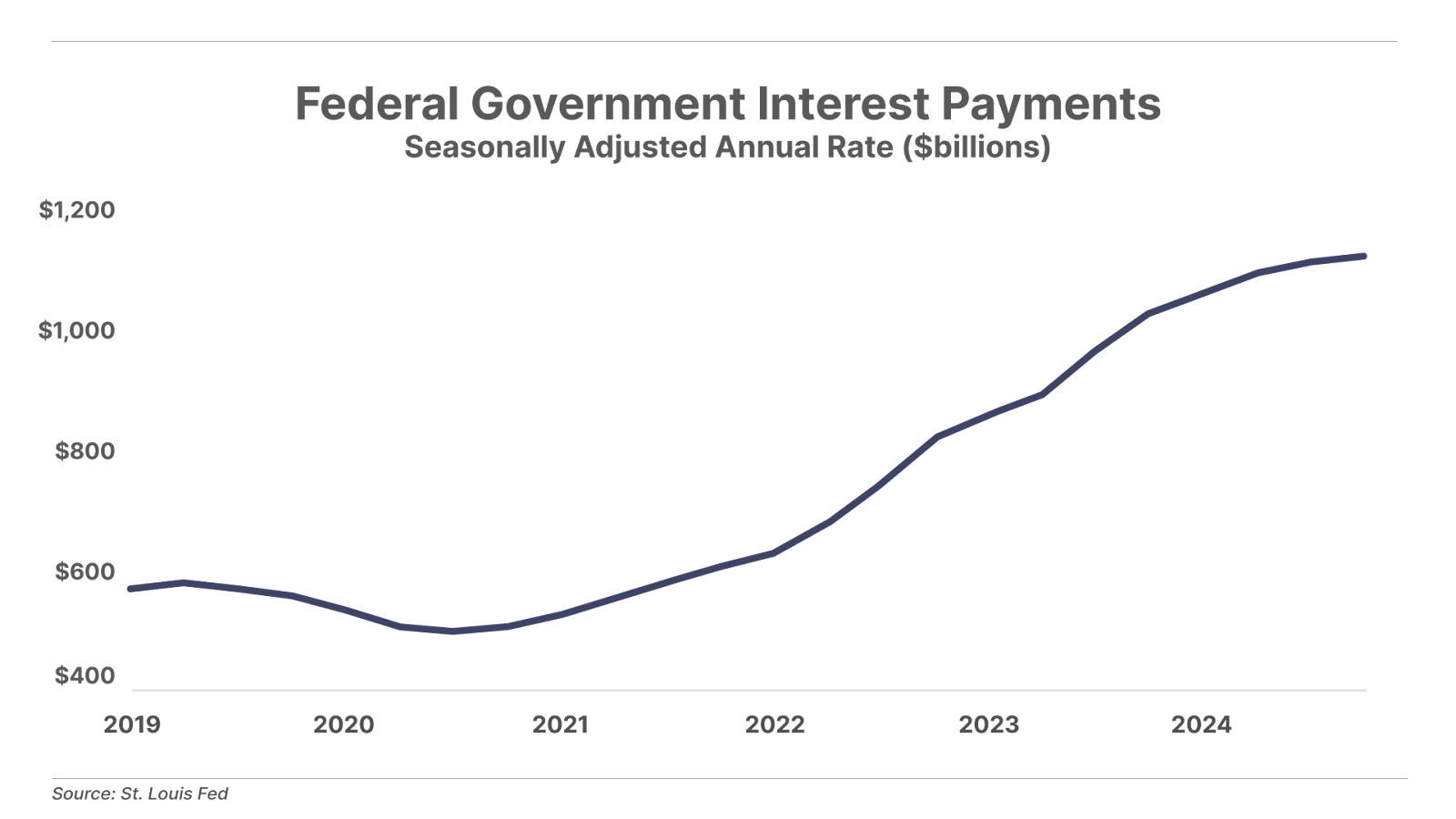
Meanwhile, nothing (of any real substance) is being done to restrain government spending. Instead, radical new measures (high tariffs) have been threatened (and occasionally been enacted) to attempt to increase government revenues. Most investors, I believe, do not understand the shock to our economy that raising taxes (through tariffs) by this amount, overnight, has caused.
By choosing to ignore government spending and instead try to increase government revenues (massively), we’re setting ourselves up for a severe recession. Or even another Great Depression.
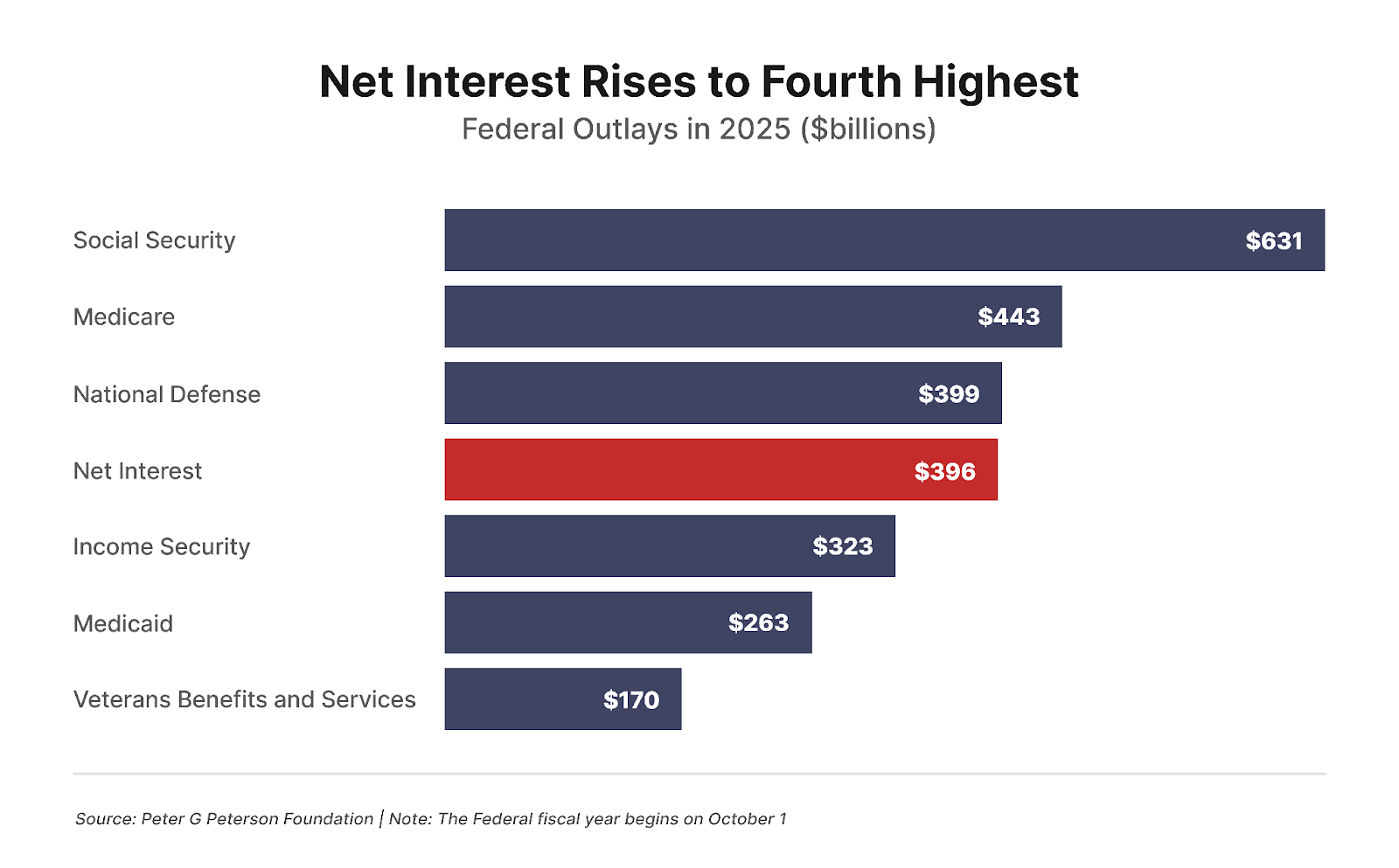
And there’s one other final irony. Using tariffs to raise revenues may play in Peoria (because people foolishly believe that consumers don’t ultimately pay these taxes), but they will not play well with our trading partners… who are also our major creditors.
In my career (since 1996), I haven’t seen a worse outlook for investors, ever.
And I think we’re a long, long way from resolving these issues.
Of course, I could be wrong – it’s impossible to handicap the actions of the current administration because it’s clear they don’t even know what they’re going to do next.
But my strong advice continues to be this: have at least half of your portfolio in gold, Bitcoin, and cash. If you want more detailed advice on asset allocation, please read my Permanent Portfolio report.
These are not normal market conditions. And even though it seems like we’ve seen the worst of the panic, I don’t think we have even gotten started yet. There is a lot more carnage to come.
If you’re prepared, that’s great news: you’ll have the opportunity over the next 12 to 36 months to acquire some very good businesses at fair prices. But until we see the credit markets pricing risk appropriately, until we see stocks trading at normal valuations, and until all of the drama with the government bond market is sorted out, I think it will pay to be more conservative with your investments than you ever have ever been before.
I look forward to your thoughts and questions: [email protected]
Tough times call for tough tactics… (and massive profits?)
I’ve just interviewed a private millionaire who uncovered some strange movements in the market… It’s a market phenomenon that happens every Friday. One that he’s used week after week to rack up double and triple-digit trades… And considering that his track record boasts an amazing 97% win rate… even in today’s market, I’d say it works pretty well. Great for him – but what does that mean for YOU? With all the uncertainty and fear flowing through the markets today, he’s finally agreed to open up about this strategy so other regular investors can use it too. Want in on the action? Consider THIS your personal invitation.
Three Things To Know Before We Go…
1. The tariff rollercoaster continues. Late Friday evening, the Trump administration quietly issued guidance exempting a slew of electronic devices and components – including smartphones, computers, TV displays, memory cards, and semiconductors – from its steep 125% tariffs on Chinese imports. The White House said on Saturday that the exemptions were made to help ensure that companies – including U.S. tech giants like Apple (AAPL) – have time to move production to the U.S. However, on Sunday, President Trump and several of his top trade officials cast doubt on the exemptions, suggesting they were only temporary. Separately, on Sunday, China announced it was suspending exports of rare earth minerals and magnets – essential for manufacturing a broad range of electronics – to the U.S. in retaliation to recent tariffs.
2. Treasuries get crushed, but foreign buyers hold steady. U.S. Treasury prices fell 3% last week, yet foreign central banks defied expectations by stepping in as net buyers, adding to their holdings rather than pulling back. Still, Treasury prices have not performed their typical role as a safe haven amidst the market turmoil in recent weeks. Instead, inventors’ bond holdings have added to the shakiness in their portfolios, with bond market volatility surging to its highest level since 2023.
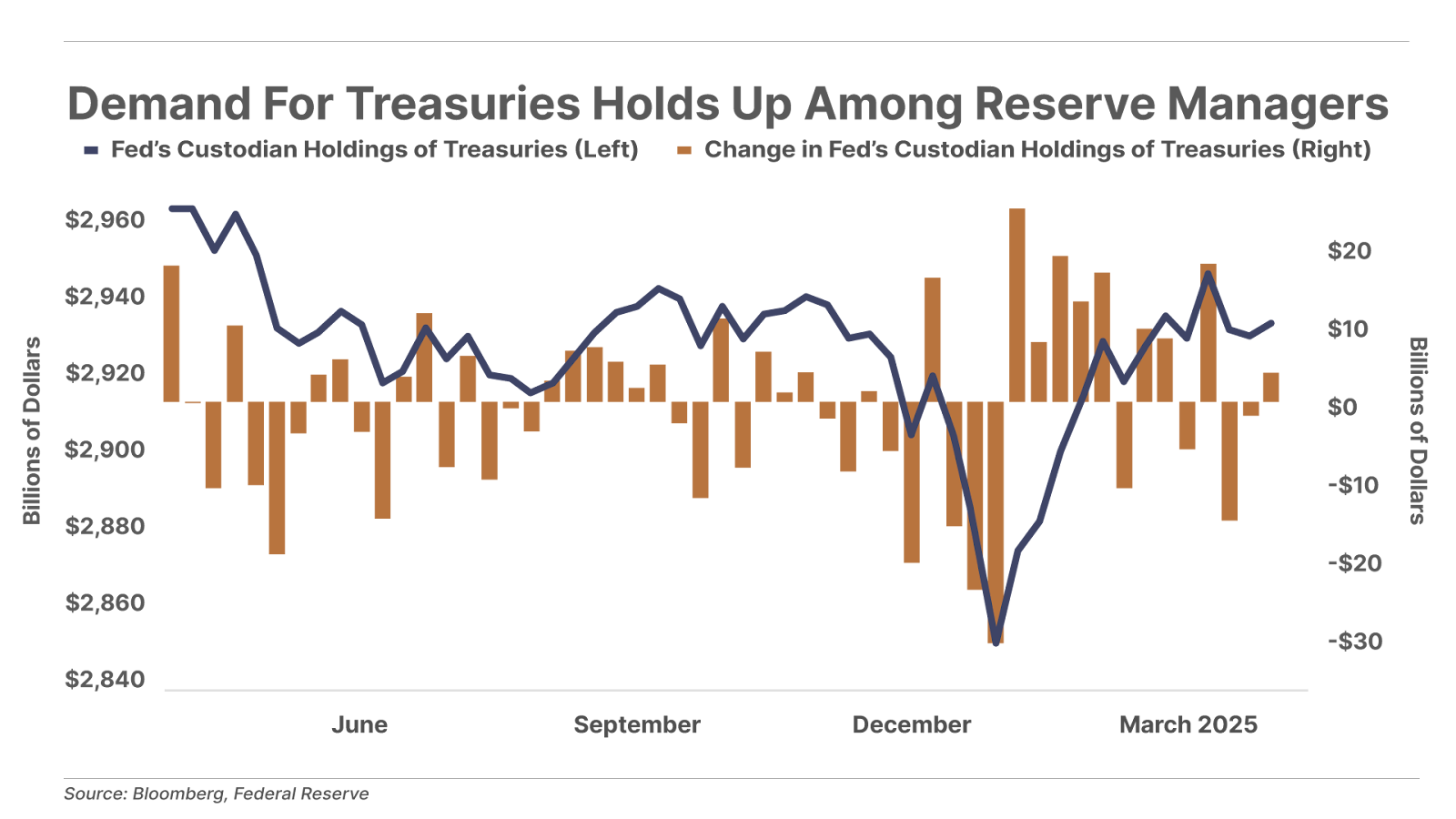
3. Consumer sentiment drops to multi-decade low. Consumer sentiment declined for the fourth consecutive month, hitting its lowest level in 45 years. Americans are increasingly concerned about a recession stoked by uncertainty surrounding the Trump administration’s tariffs. Inflation expectations have also surged – consumers now anticipate an average annual inflation rate of 4.4% over the next decade, more than double the Federal Reserve’s 2% target. If consumer expectations prove accurate, the economy could be headed for significant pain.
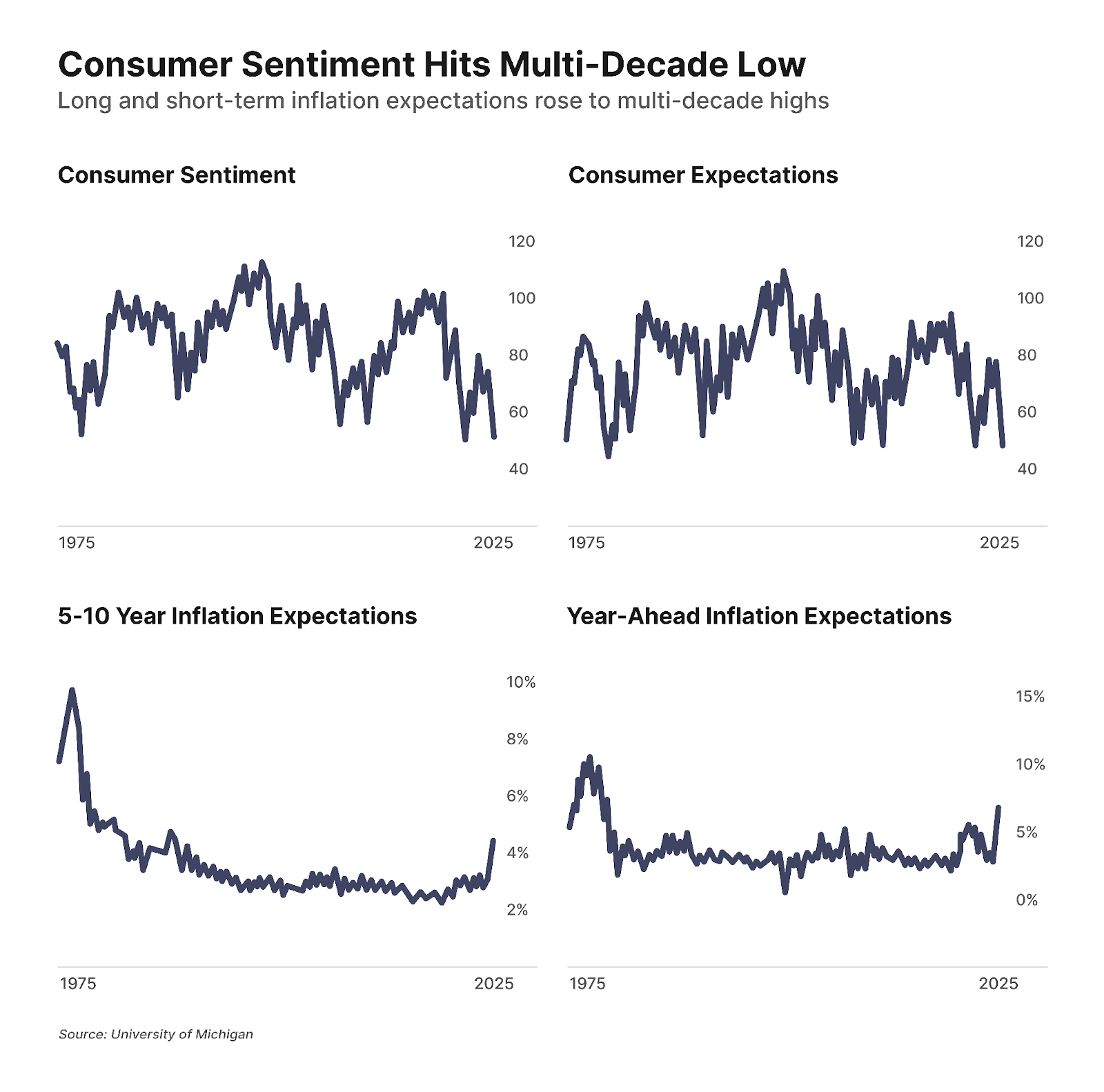
And one more thing… Today’s poll: Trump’s trade war
Good investing,
Porter Stansberry
Stevenson, MD

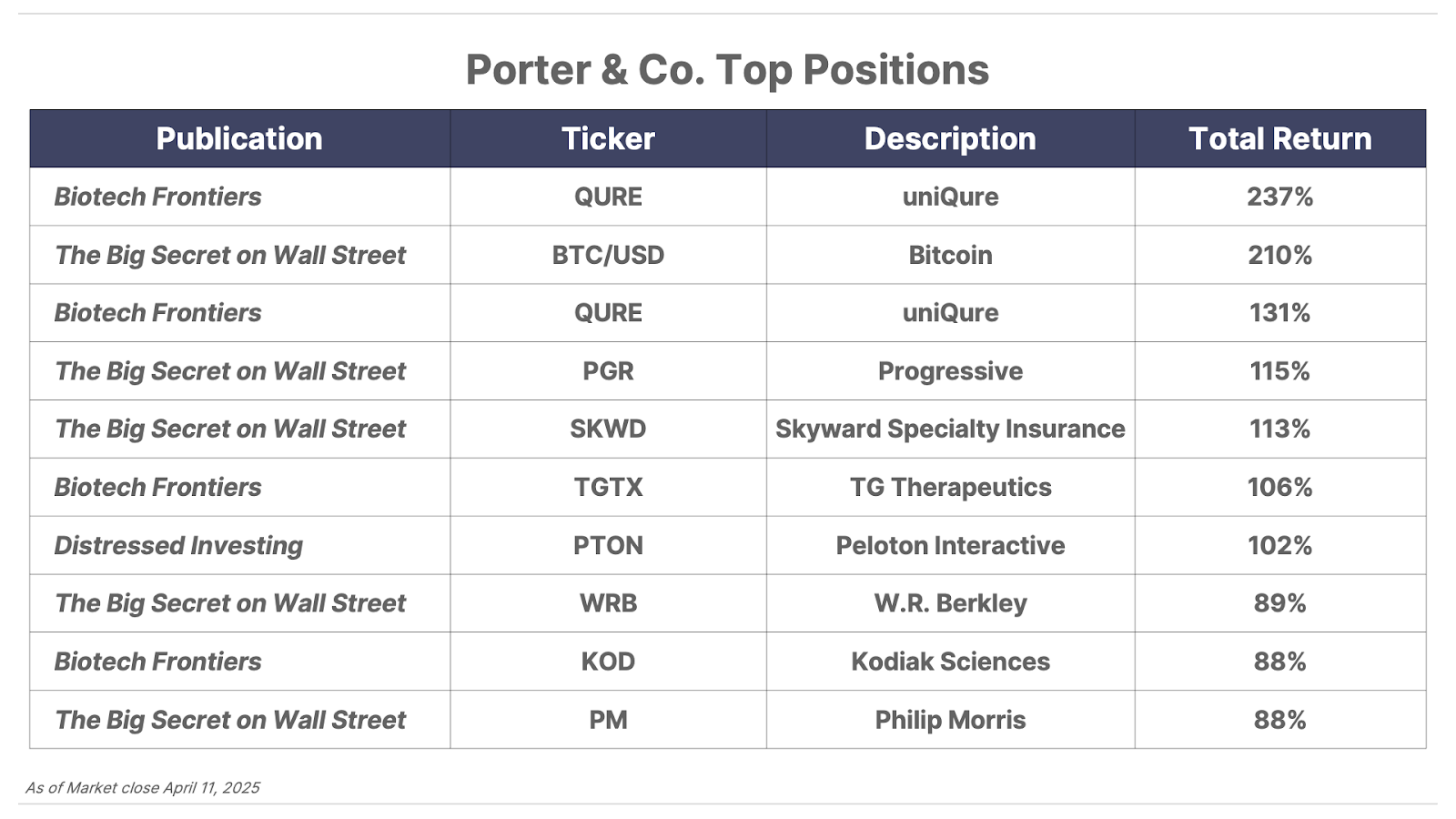
Please note: The investments in our “Porter & Co. Top Positions” should not be considered current recommendations. These positions are the best performers across our publications – and the securities listed may (or may not) be above the current buy-up-to price. To learn more, visit the current portfolio page of the relevant service, here. To gain access or to learn more about our current portfolios, call Lance James, our Director of Customer Care, at 888-610-8895 or internationally at +1 443-815-4447.
